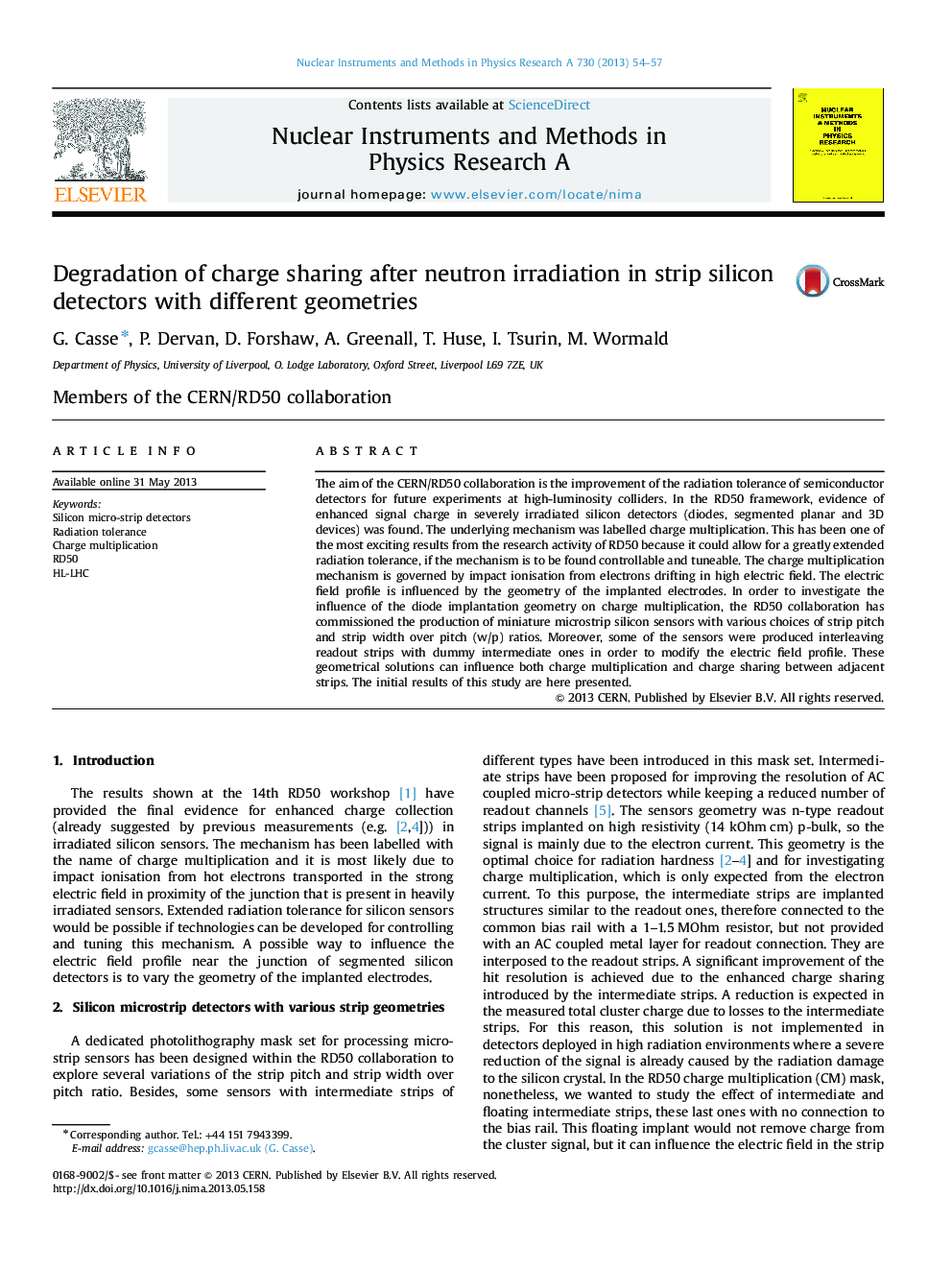| Article ID | Journal | Published Year | Pages | File Type |
|---|---|---|---|---|
| 8178725 | Nuclear Instruments and Methods in Physics Research Section A: Accelerators, Spectrometers, Detectors and Associated Equipment | 2013 | 4 Pages |
Abstract
The aim of the CERN/RD50 collaboration is the improvement of the radiation tolerance of semiconductor detectors for future experiments at high-luminosity colliders. In the RD50 framework, evidence of enhanced signal charge in severely irradiated silicon detectors (diodes, segmented planar and 3D devices) was found. The underlying mechanism was labelled charge multiplication. This has been one of the most exciting results from the research activity of RD50 because it could allow for a greatly extended radiation tolerance, if the mechanism is to be found controllable and tuneable. The charge multiplication mechanism is governed by impact ionisation from electrons drifting in high electric field. The electric field profile is influenced by the geometry of the implanted electrodes. In order to investigate the influence of the diode implantation geometry on charge multiplication, the RD50 collaboration has commissioned the production of miniature microstrip silicon sensors with various choices of strip pitch and strip width over pitch (w/p) ratios. Moreover, some of the sensors were produced interleaving readout strips with dummy intermediate ones in order to modify the electric field profile. These geometrical solutions can influence both charge multiplication and charge sharing between adjacent strips. The initial results of this study are here presented.
Related Topics
Physical Sciences and Engineering
Physics and Astronomy
Instrumentation
Authors
G. Casse, P. Dervan, D. Forshaw, A. Greenall, T. Huse, I. Tsurin, M. Wormald, Members of the CERN/RD50 collaboration Members of the CERN/RD50 collaboration,
